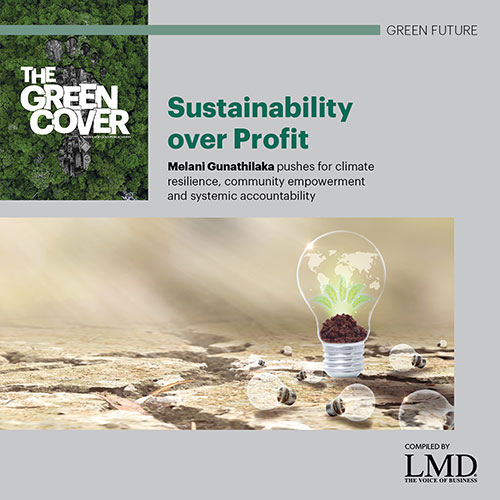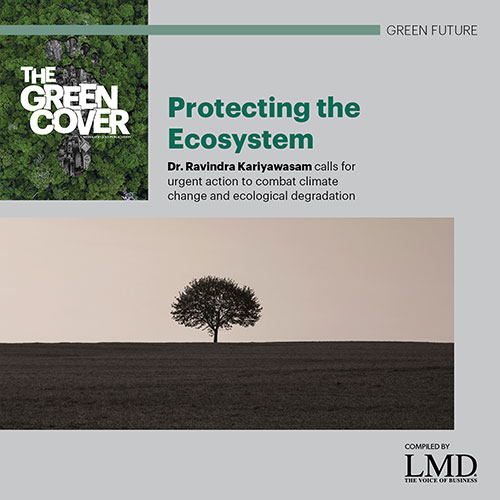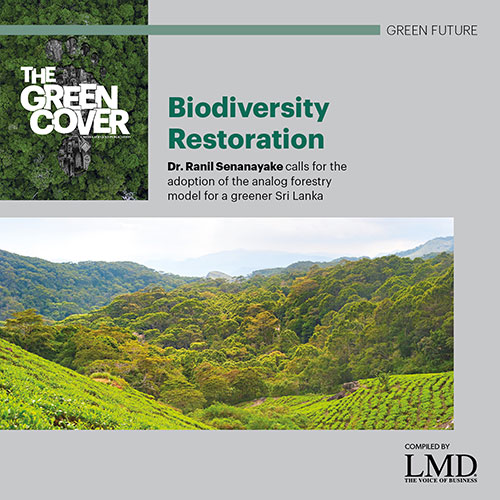RENEWABLE ENERGY SOURCES
Going beyond Solar
Senura Fonseka believes it’s possible to position Sri Lanka as a regional clean energy hub relatively soon
Q: How would you assess Sri Lanka’s renewable energy landscape?
A: Sri Lanka currently possesses substantial renewable energy potential but remains significantly underexploited.
However, since our hydro dependence exposes us to seasonal variability and climate induced risks, diversification is an urgent need. The landscape offers great opportunities for expansion with abundant and largely untapped renewable resources such as onshore and offshore wind and solar power.
Given Sri Lanka’s extensive Exclusive Economic Zone (EEZ), which is approximately eight times larger than its landmass, the country has extraordinary potential for offshore wind generation that can help position it as a future regional energy exporter.
Additionally, the potential for renewables supports the possibility of generating green hydrogen and ammonia, which represents significant export market opportunities. This will help diversify Sri Lanka’s economy and reduce its vulnerability to global energy price fluctuations.
Q: What are the biggest challenges in scaling up renewable energy in Sri Lanka?
A: Frequent policy changes and unclear regulatory frameworks deter long-term international investments. Investors seek policy certainty that spans 10-20 years, including stable and attractive tariff structures, clear guidelines on grid access and streamlined approval processes.
Sri Lanka’s existing transmission and distribution network is inadequate for the large-scale integration of renewable sources. Expanding transmission lines, substations and grid interconnections, particularly to the northern and eastern regions, is essential but currently limited by state controlled monopoly, investment gaps and slow project execution.
Access to low-cost capital remains challenging and it can only be achieved after initial investments have been made and adequate infrastructure established.
Continued reliance on coal, oil and LNG poses severe economic risks due to price volatility, geopolitical uncertainties and foreign currency depletion. Transitioning fully to renewable energy is essential to enhance national energy security.
“Dedicated funding and incentives must be allocated for R&D in emerging technologies such as offshore wind and tidal energy, green hydrogen and biofuels”
Q: Are there lesser known renewable energy sources that have potential for large-scale adoption?
A: Sri Lanka has significant potential for the large-scale adoption of offshore wind energy, particularly along its northern, northwestern and eastern coasts, because it’s commercially viable, scalable and offers a steady energy output. With a large EEZ, Sri Lanka can become an energy exporter within a decade by leveraging offshore wind.
Marine algae cultivation holds promise especially in the production of biofuels and Sustainable Aviation Fuel (SAF). Within a decade, seaweed-based biofuels could become viable in boosting energy diversification, exports and coastal economic development.
Tidal and wave energy offer long-term potential but are currently limited by high costs and immature technology. Continued R&D and pilot projects are needed to assess their future scalability.
Q: What policy shifts are needed to promote research and development in this sector?
A: To promote R&D in the renewable energy sector, government policy must shift from state dominance to encouraging the privatisation of energy generation and transmission, while retaining strategic oversight of grid security, regulation, equitable access and social safeguards.
A stable, long-term policy framework that’s guaranteed for 10 to 20 years with realistic feed-in tariffs, tax incentives and investment protection is essential to attract foreign investors.
Transparent, well-defined processes are needed for land and seabed allocation within the EEZ, including clear tender procedures, valuation methods and benefit sharing models to sustainably leverage national resources.
Policies should also enable private sector participation in building and operating transmission infrastructure particularly in the north and east, to improve grid connectivity and unlock renewable energy potential.
Dedicated funding and incentives must be allocated for R&D in emerging technologies such as offshore wind and tidal energy, green hydrogen and biofuels. International partnerships, academic collaboration and innovation hubs should be actively promoted to position Sri Lanka as a leader in renewable energy research in the region.
– Compiled by Nicola Jayasundera

Senura Fonseka
Renewable energy and climate change advocate
General Manager – Arinma Power







